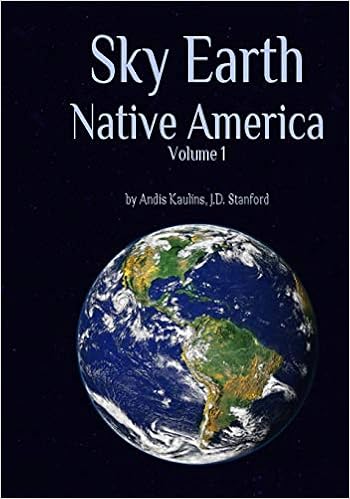Mees has stuck his neck out by now also claiming, as we have claimed for years, that the mound builders in erecting their mounds and tumuli may have relied on astronomical parameters in prehistoric viz. ancient times.
Magdalenenberg is located near Villingen-Schwenningen in Baden-Württemberg, Germany and is the largest tumulus from the Hallstatt period in Central Europe. The GPS coordinates from various sources are:
48° 2′ 39.48″ N, 8° 26′ 37.319″ E viz. 48.0443 N 8.4437 E
Latitude: 48.044167 N | Longitude: 8.44361 E.
The aged wheels of academic Archaeology and Astronomy, as also Archaeoastronomy, are very rusty and turn very slowly, if at all. The astronomical decipherment by Mees, originally scheduled for publication in the year 2007, did not appear until the year 2011. See Allard Mees, Der Sternenhimmel vom Magdalenenberg [The ]. Das Fürstengrab bei Villingen-Schwenningen – ein Kalenderwerk der Hallstattzeit, Sonderdruck aus dem Jahrbuch des Römisch-Germanisches Zentralmuseum [web.rgzm.de] 54, Mainz 2007 (erschienen 2011), S. 217-264.
Even today, five to ten years later, little about the work of Mees can be found online, perhaps because the establishment "mainstream" archaeological and astronomical communities virtually ignore any analysis alleging a connection between archaeological sites and prehistorical astronomical usage & function.
Mees as a person makes a brilliant impression on us and is of course surely well aware of the academic "stone wall" that he faces due to his astronomical conclusions about such an important archaeological site.
We see that he has apparently remained undauted, and made an English-language presentation of his analysis on November 14, 2013 at the Society of Antiquaries in London, a speech which was recorded and is found on youtube and which we embed below, including the following proviso:
'The Celtic Moon-Based Culture and the
Burial Mound of Magdalenenberg', Allard Mees, FSA. This lecture took
place as part of the programme for Ordinary Meetings of Fellows at the
Society of Antiquaries of London. With permission from the speaker, the
Society recorded this lecture and made it available on YouTube and on
its website at www.sal.org.uk. All rights reserved. [link added]
It was at that very same podium that we ourselves spoke in 2008, giving a presentation about the Phaistos Disk that has remained our most popular posting ever at the Ancient World Blog: The Phaistos Disc: An Ancient Enigma Solved : Two Corroborative Old Elamite Scripts are Ancient Greek. Presented 31 October 2008 at the INTERNATIONAL CONFERENCE ON THE PHAISTOS DISK on the 100th anniversary of its discovery in 1908 by the Italian archaeologist Luigi Pernier. Conference location: Society of Antiquaries, London, Burlington House, Piccadilly. Organization and sponsorship: Minerva, the International Review of Ancient Art & Archaeology, Jerome M. Eisenberg, Ph.D., editor.
Mees analyzed the archaeological findings at Magdalenenberg in the previously cited Der Sternenhimmel vom Magdalenenberg [The Sky of Stars Represented at Magdalenenberg]. Das Fürstengrab bei Villingen-Schwenningen – ein Kalenderwerk der Hallstattzeit.
In that article, Mees notes that the positions of burials in the tumulus correspond to stars of the heavens, a phenomenon about which we have been writing about for years in showing that the ancients in the hermetic tradition mapped the stars of the sky on Earth, "as above, so below" in the geographic orientational placing of their earthworks and mounds (also those made of shells), burial sites, petroglyphs and other human constructions, as explained at megaliths.net.
Mees concludes that the following groups of stars are represented at Magdalenenberg: Ursa Minor, Draco, Ursa Major, Boötes, Corona Borealis, Serpens Caput, Hercules, Lyra, Sagitta, Cygnus, Delphinus, Cepheus and Cassiopeia.
As Mees notes, stars selected to represent specific sky sections have varied over eras and it can not always be said with certainty which stars the ancients used for grouping. However, the brightest stars are prominent and have the same positions, regardless of how the stars were grouped in ancient days. In other words, if we say "the stars of Ursa Major", those stars are identifiable, even if the ancients did not use exactly the same stars for portrayal.
To reduce the controversial nature of his astronomically-focused presentation, Mees -- understandably -- tries to draw a connection to astronomy in Greece and the Ancient Near East, an effort that might be superfluous, barring other findings that such a specific connection actually existed.
The fact is, as our research has shown for decades, quite sophisticated astronomical observation existed in northern Europe long before Magdalenenberg and preceded ancient viz. classical Greek culture, so that reference to the Greeks by no means establishes provenance of astronomy.
In any case, what the article by Mees means, and it is significant, is that younger generations are and will increasingly be focusing on the astronomical aspects of man's prehistoric and ancient past, aspects that present and previous generations of archaeologists and astronomers have by-and-large ignored -- wrongly so.


